Are you looking for the best things to do in Malta in winter? Here’s my full guide!
Golden beaches, bright blue sea and food and wine under gentle sunlight… if you’re looking for some winter sun, Malta certainly delivers.
Renowned for its warm climate even during the colder months, this Mediterranean country offers an idyllic escape from dreary British winter.
I was lucky enough to visit Malta twice last winter and adored exploring the island without crowds of tourists, enjoying the winter sun when possible, and even taking a dip into a chilly but refreshing Mediterranean Sea.
So, I’ve put together all of the best bits about Malta in winter in this full guide!
What is Malta in winter like?

With bright sunshine for most of the year, Malta certainly delivers when it comes to a warmer winter destination (it pretty much never snows or gets super cold).
While most of Europe is huddled around fireplaces and cranking up the central heating, in Malta, winter is prime time to enjoy the great outdoors and go horseriding, hiking or cycling.
But despite the weather being wonderfully mild, most tourists favour Malta in the summer season.
What does that mean? All the more space for you!
The streets are usually bustling with tourists – Malta’s a tiny island, after all – but in the winter months, you can enjoy a quieter, more laidback vibe – even in the narrow streets of Valletta or the walled city of Mdina.
While it’s not the traditional festive season break, Malta’s Catholic population ensures that Christmas traditions are celebrated – they might just be a little different than you’re used to!
Or, visit in January or February for a winter warmer, somewhere to brush off the cobwebs of winter and rejuvenate, ready for spring!
In March, Malta starts warming up, ready to dust off the cobwebs for spring and summer.
What’s the weather like in Malta in the winter?
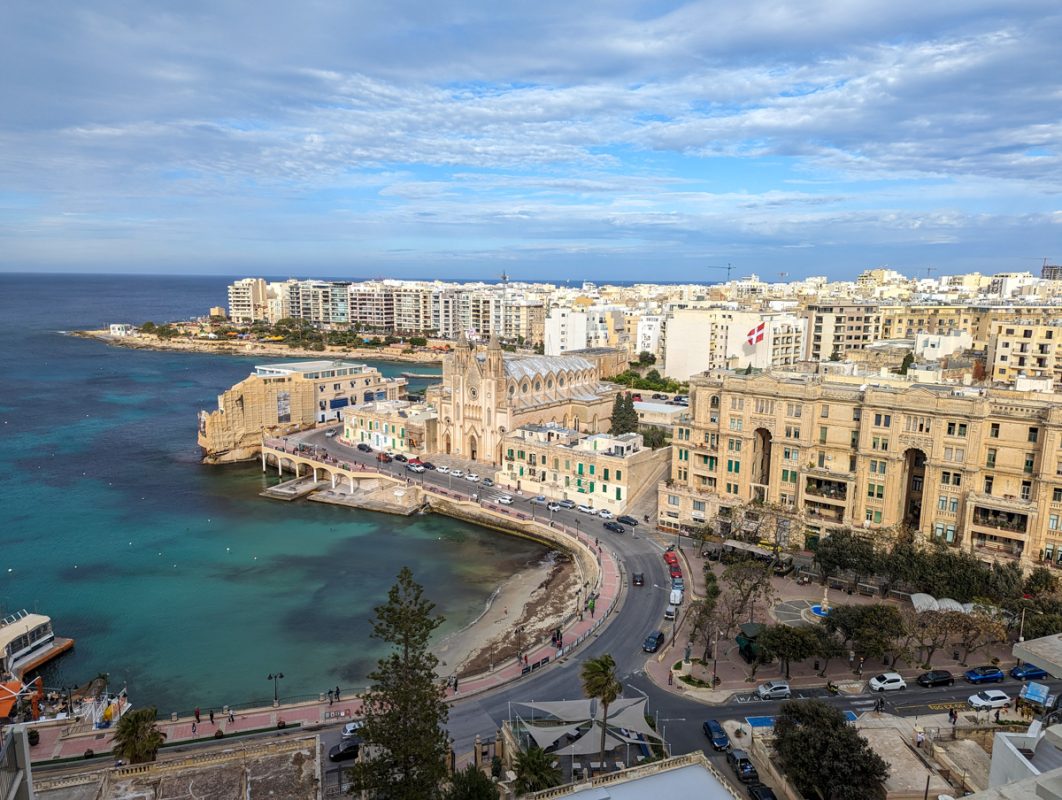
Characterised by mild, sunny days and cooler, comfortable nights, winter is a season of balance in Malta.
Typically, winter temperatures in Malta hover between a pleasant 10 to 15 degrees Celsius during the day, dropping slightly at night.
Malta often reaches up to 40C in the summertime – far too hot to do any real exploring – so the winter season is ideal for outdoor activities.
Plus, the island enjoys an average of five to six hours of sunshine even on the shortest winter days, a true luxury for sun-starved Northern Europeans!
This makes it one of the best winter sun destinations in Europe – in fact, it’s one of the warmest places to visit in Europe in December.
Rainfall is slightly more common in winter than in the arid summer months, but it’s sporadic and often short-lived.
Plus, rainfall makes the Maltese countryside even more lush and vibrant – ideal for hiking!
Things to do in Malta in winter
Malta’s brimming with excellent things to do all year round, and winter is the perfect time to enjoy most of them!
Crowds are thinner, making it the ideal time to visit popular locations like the awe-inspiring Hal Saflieni Hypogeum, megalithic temples like Hagar Qim, or the majestic St. John’s Co-Cathedral.
It’s also a brilliant season for nature enthusiasts and hikers.
The slightly wetter weather revitalises the Maltese countryside, turning the usually arid landscapes into lush green vistas.
The Dingli Cliffs or the rural trails around Mellieha and Gozo are must-visits for those seeking an outdoor adventure.
Hike, or go horseback riding or even do a segway tour at Golden Bay (which is one of the best beaches on the island!).
Of course, you could also spend days soaking in the vibe of Valletta or Mdina too!
If the weather is a little rainy, don’t worry – there are plenty of wet-weather activities in Malta.
The best museums on the island include the Malta Maritime Museum and the Military Museum.
Or why not try your luck at one of Malta’s luxury casinos?
St. Julian’s and Qawra are home to some of the island’s top casinos, where you can revel in the thrill of the game amidst a glamorous setting.
We went to Casino Malta on one of our trips and while I didn’t gamble (purchasing online lottery tickets on my phone is enough for me!), I enjoyed the atmosphere and learning about betting a bit more.
They are also fantastic places to enjoy a high-quality meal – check out Don Berto’s for huge portions – or go for a night out – my favourite bar was The Thirsty Barber.
Here are all of the best things to do in Malta!
1. Valetta Guided Walking Tour
This Valetta Guided Walking Tour is an exceptional way to immerse yourself in the history and culture of Malta’s capital city.
Led by knowledgeable guides, this tour takes you through the winding, narrow streets of Valletta, allowing you to soak in the city’s grandeur and beauty in a more intimate way.
From the impressive fortifications that ring the city to the splendid baroque architecture that characterises its buildings, Valletta is a living, breathing testament to Malta’s storied past.
The tour also provides fascinating insights into the city’s historic role as the headquarters of the Knights of St. John.
Winter is an ideal time to partake in this tour, with the mild weather and less crowded streets.
(In fact, I think Valletta’s an excellent winter city break!)
2. Upper Barrakka Gardens
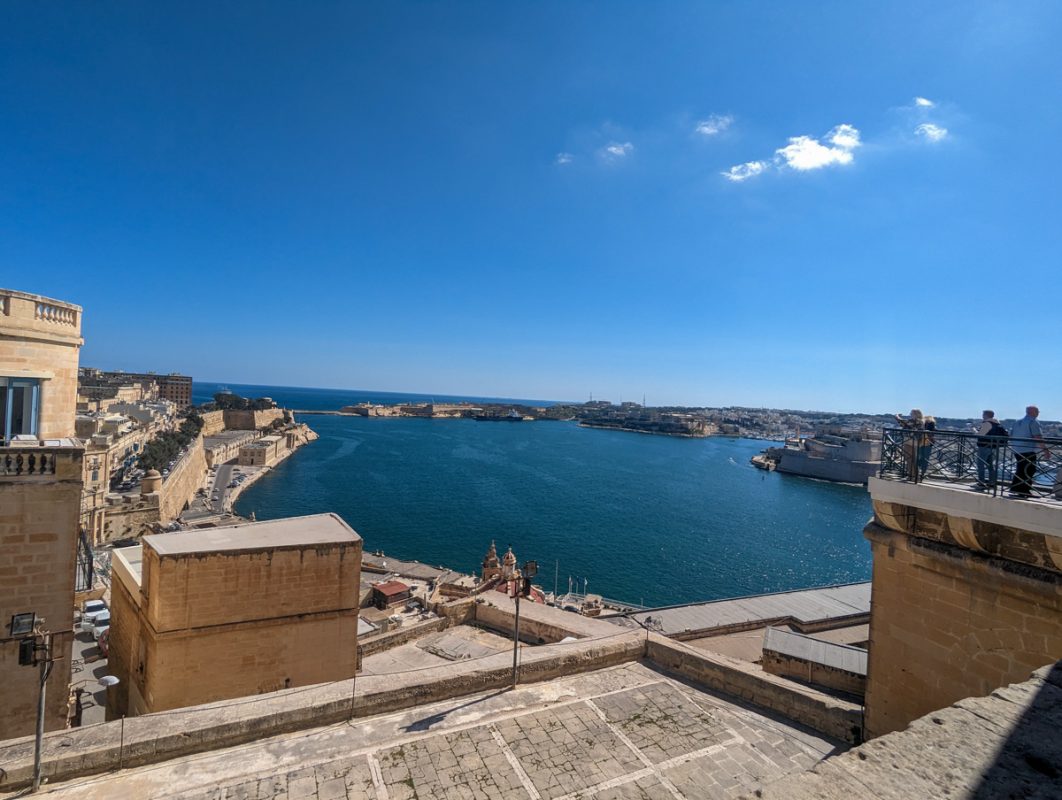
Perched on the highest point of Valletta, the Upper Barrakka Gardens are a haven amidst the city’s bustling streets.
These gardens, with their neatly manicured lawns, colourful flower beds, and ornate statues, provide a serene setting for a leisurely stroll or a relaxed afternoon.
However, the highlight of the Upper Barrakka Gardens is undoubtedly the panoramic view they offer.
Overlooking the Grand Harbour and the Three Cities, the gardens offer unparalleled vistas of some of Malta’s most iconic landmarks.
The Saluting Battery, located within the gardens, is a unique historical attraction where you can witness the daily firing of the cannon, a tradition dating back to the era of the Knights.
3. St John’s Co-Cathedral
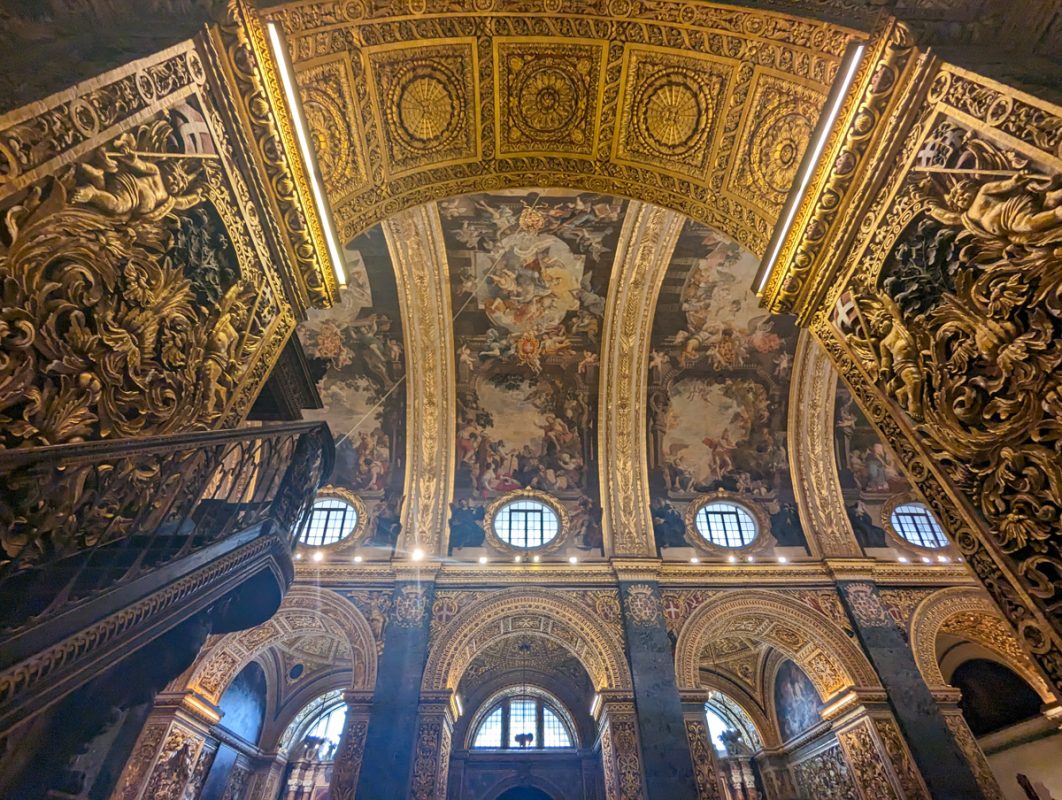
St John’s Co-Cathedral, located in the heart of Valletta, is a treasure trove of baroque art and architecture.
Once the conventual church of the Knights of St. John, the cathedral impresses with its richly decorated interior.
A veritable feast for the eyes, its ornate carvings, gilded vaults, and stunning marble floors tell tales of its grand past.
The cathedral is also home to two masterpieces by the renowned artist Caravaggio.
Visiting the cathedral in winter allows you to truly appreciate its artistic splendour without the typical summer crowds.
4. Malta Maritime Museum
Housed within the former Royal Naval Bakery, the Malta Maritime Museum chronicles Malta’s significant maritime history.
Its expansive collection includes more than 20,000 artefacts, spanning over 7,000 years of seafaring history.
Exhibits range from ancient Roman anchors to the impressive figurehead of a British royal navy ship.
The museum offers an interactive experience, presenting Malta’s historical and cultural ties with the sea through captivating exhibits and displays.
A visit here on a cooler winter day can be both educational and entertaining!
5. Visit the Commonwealth War Graves
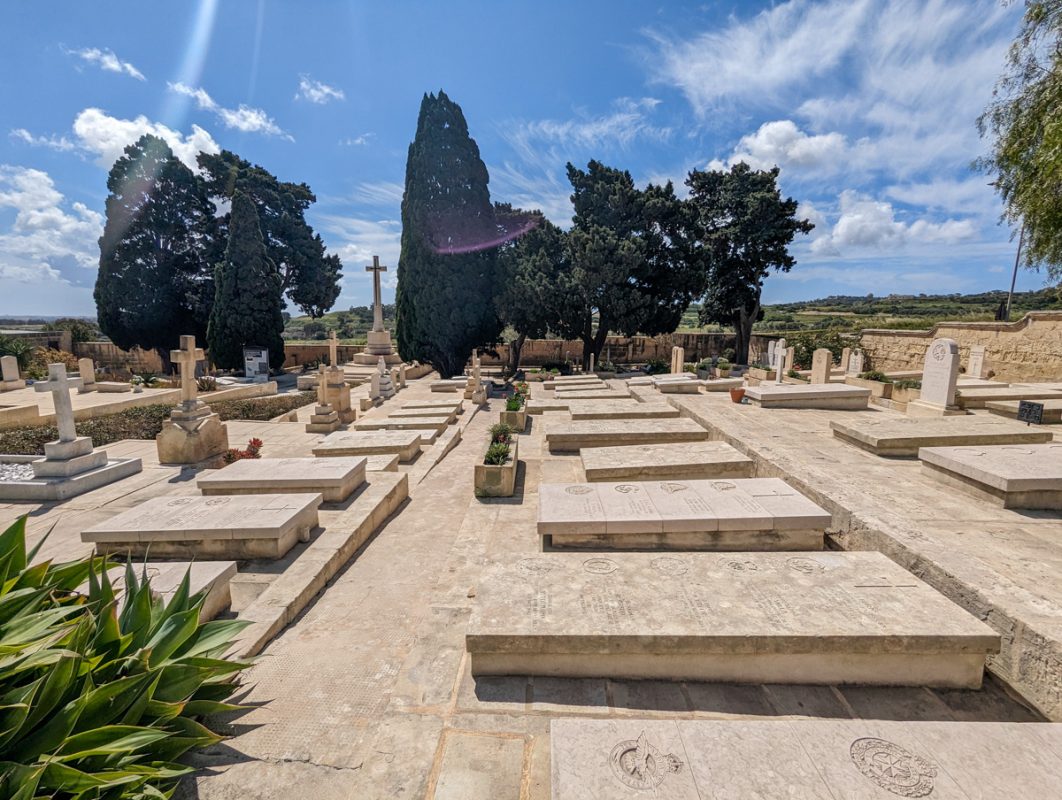
Paying a visit to the Commonwealth War Graves in Malta offers a moment of sombre reflection.
These cemeteries, maintained by the Commonwealth War Graves Commission, are the final resting places for soldiers from both World Wars.
Each headstone, neatly lined and immaculately maintained, stands as a poignant reminder of the human cost of war.
The largest of these cemeteries, the Capuccini Naval Cemetery, located in Kalkara, offers a quiet and contemplative space, steeped in history.
A visit here is an opportunity to pay respects and learn more about the island’s role during these global conflicts.
I actually found my great great uncle’s grave here – he died in Malta just after the war from an illness.
6. Ħaġar Qim Temples
Packing a wallop of historic fascination, the Ħaġar Qim Temples take you on a wild ride back to Malta’s prehistoric times.
They’re one of the most ancient sites in the world; older than Stonehenge and the Pyramids of Giza!
These temples have stood the test of time, proudly showing off their colossal limestone blocks and giving us a sneak peek into the life and times of our Neolithic ancestors.
Visiting in winter sidesteps the sizzling sun and summer throngs, so you can take your time unravelling their millennia-old mysteries.
7. Dingli Cliffs
The Dingli Cliffs, the highest point on the Maltese Islands, serves up panoramas that will leave you giddy with excitement.
Enjoying a winter sunset here is unforgettable, with vibrant hues reflecting off the sea.
No filters needed for your Instagram snaps here – the Dingli Cliffs are au naturale and unapologetically gorgeous.
I did a fantastic walk from here to the Blue Grotto, and stopped in Hagar Qim on the way. Ideal for a sunny but cool winter’s day!
8. Horseriding at Golden Bay
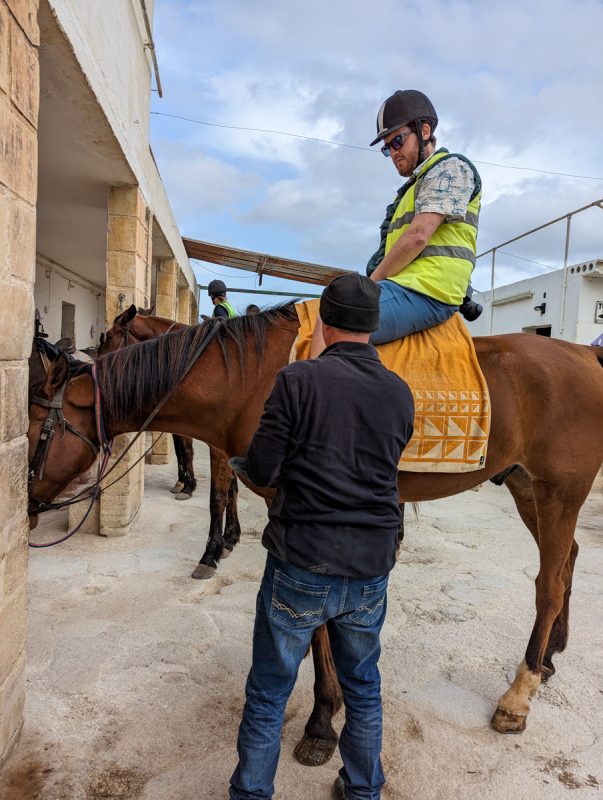
Fulfill your cowboy or cowgirl dreams atop the scenic cliffs of Malta with Golden Bay Horseriding.
Trot along these dramatic natural platforms, perhaps against the backdrop of a stunning sunset!
You’ll make the most of the mild winter temperatures as you savour panoramic views of Gozo and the sparkling Mediterranean Sea.
Opt for a standard one-hour ride, a leisurely 90-minute sunset tour, or even tailor a group ride for a truly unique occasion.
With prices starting at just €30 per person, this is your chance to unleash your inner equestrian and create unforgettable memories!
9. Segway Tours
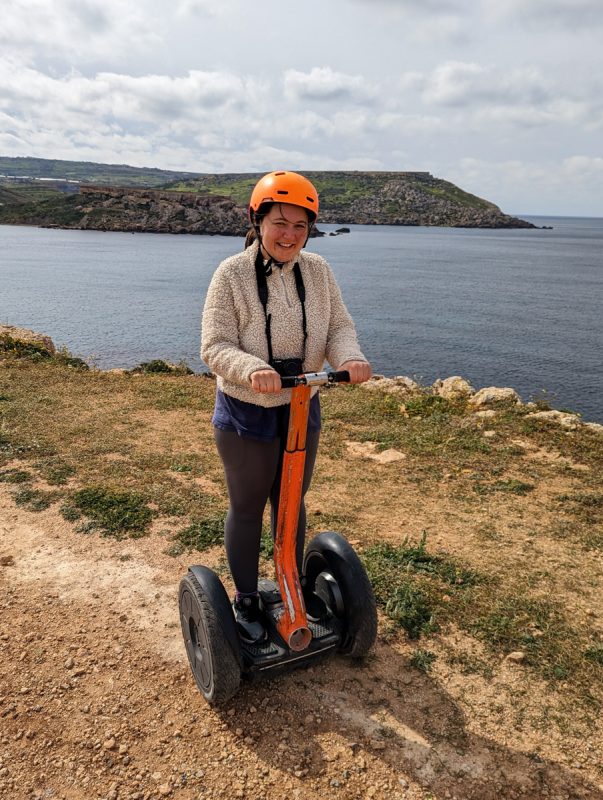
Let Malta Segway Tours transport you around the island!
Segways are two-wheeled, self-balancing personal transporter.
They use gyroscopic sensors to maintain balance and allows the rider to control the speed and direction simply by shifting their body weight.
Leaning forward makes the Segway move forward, leaning back slows it down, or makes it move backward, and turning the handlebar steers the device in the desired direction.
It sounds complicated, but it’s relatively easy to pick up!
Malta Segway Tours offers an excursion through the UNESCO-listed cultural heart of Valletta – check it out here.
Glide effortlessly through the city’s historic streets, absorbing Malta’s history before culminating your Segway adventure at the immersive Malta Experience.
Or choose to explore Malta’s rugged beauty with a tour of the soaring Dingli Cliffs; sunset sessions are also available!
10. Rolling Geeks Car Tour

The Rolling Geeks Car Tour injects some electrifying fun into exploring the Three Cities.
Picture this: you’re cruising around in an open-top electric car, zipping past historic sites, while a pre-recorded guide regales you with juicy tidbits of Maltese history.
You’ll follow the car’s GPS, which means that you’ll see and learn about some of the Three Cities’ very best sites while exploring at your leisure!
11. Scuba Diving
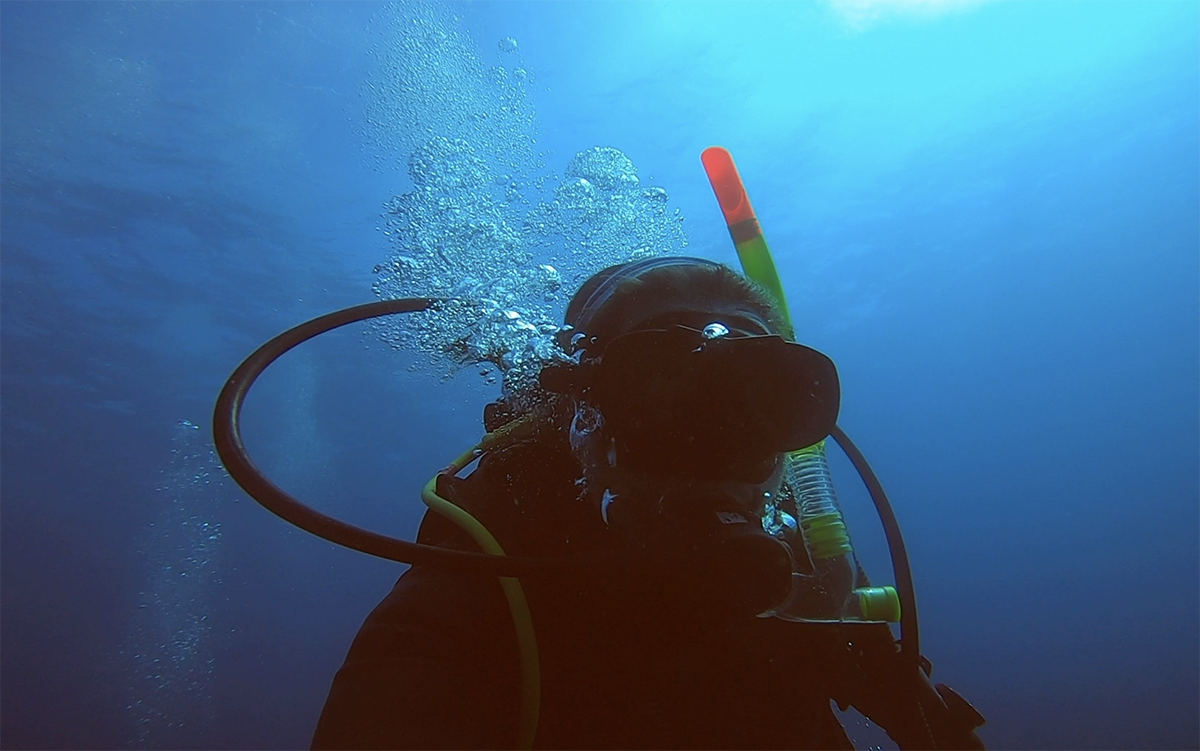
Who says you can’t go diving in winter?
With water temperatures staying relatively balmy even in the cooler months, exploring Malta’s underwater world is a year-round adventure.
Whether it’s swimming through underwater caves or admiring the island’s famous shipwrecks, scuba diving in Malta’s clear waters is enchanting.
I went scuba diving in Malta in April last year, and while it was a couple of degrees warmer than it is in the depths of winter, it was still quite chilly and I wore all of the winter diving gear.
In the coldest winter months, you might need to wear a dry suit (which you’ll need extra training for). I went scuba diving in Malta in April and wore two 5mm wetsuits.
12. Explore Gozo
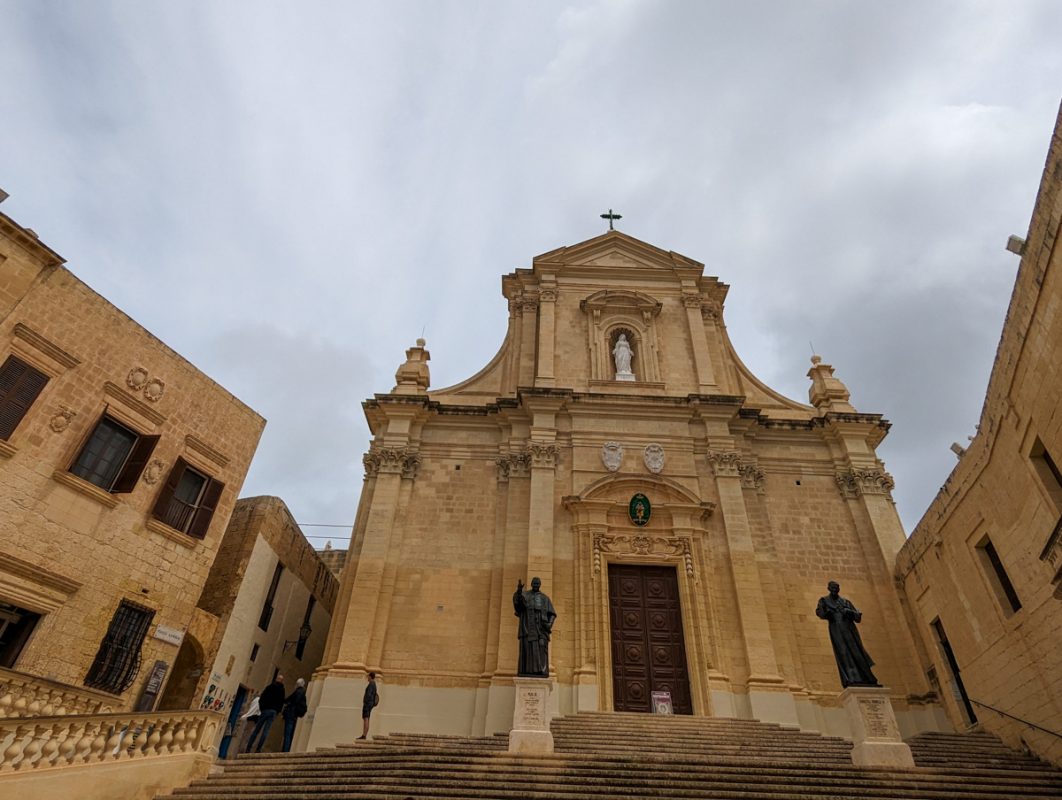
Gozo, another island in the Maltese Archipelago, trades the busy tourist sites for the tranquil countryside.
I’d recommend visiting for more than one day if you can – but if that’s not possible, you can visit on day trip.
Some tour operators even offer inclusive day trips with boat transfers, a stop in Victoria and a boat back to Comino and the Blue Lagoon – take a look at them here.
The adventure begins with a scenic ferry ride from either Sliema or the north of the island.
Just one recommendation – if the water’s rougher (as it often is in winter), the shorter crossing from the north of the island is much more preferable!
Once you reach Gozo, stroll through the capital Victoria and its historic Citadel, bask on Ramla Bay or stand in the shadow of the Ġgantija Temples, structures predating Egypt’s pyramids and filled with millennia-old stories.
13. Visit Malta’s Wineries
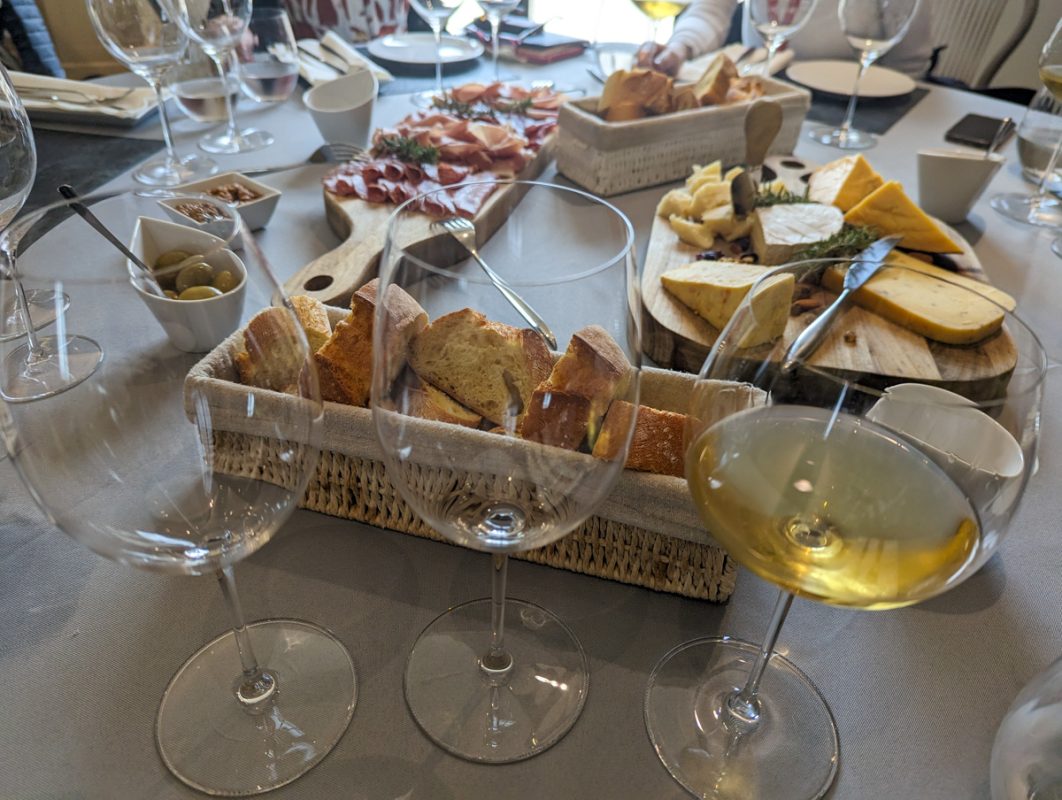
Malta’s a bit of a dark horse in the world of wine – the island boasts a growing repertoire of top-notch wineries.
While most wine that you’ll be served in Malta is actually Italian, vineyards are dotted around the island.
I visited Ta Betta Wineries and enjoyed their full tasting (complete with a cheeseboard!) and a tour around the vineyard.
14. Afternoon Tea at the Phoenicia

Escape the afternoon sun at Corinthia Palace Hotel’s Le Café, where the afternoon tea tradition takes on a Mediterranean charm.
Delight in a delectable array of delicate sandwiches – think smoked salmon and sour cream, or Parma ham with pecorino cheese.
Craving sweets?
Look no further than their finest tea pastries – freshly baked English scones served with ripe berries and clotted cream.
For the chocolate connoisseurs, the Chocolate Lovers’ Afternoon Tea is a must – the crowning glory being chocolate chip scones served with chocolate sauce.
Add a sparkle to your experience with a chilled glass of Prosecco.
Open daily from 12 noon to 6pm.
15. Tour Mdina and Rabat
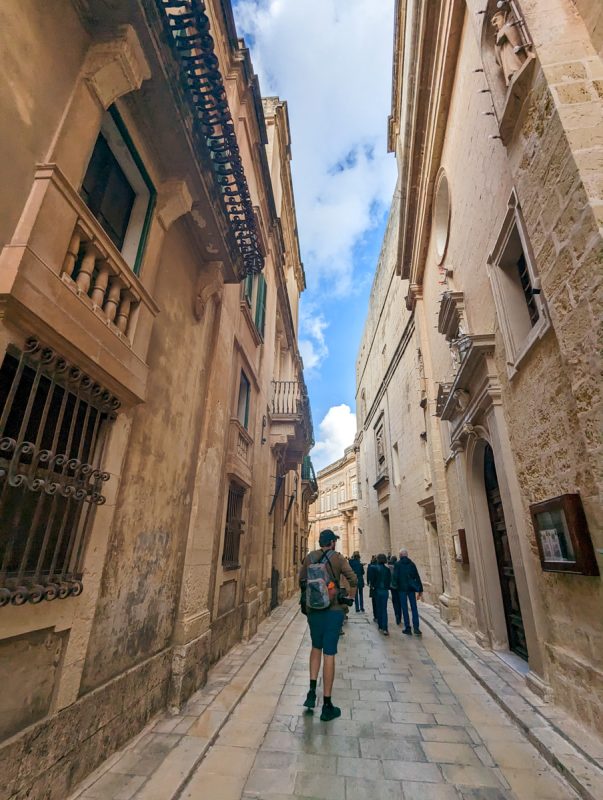
Mdina, also known as the Silent City due to the lack of cars and residents, whispers its history through its narrow, winding streets and grand palazzos.
Once home to St. Paul after his fabled shipwreck, this timeless city enchants with its narrow, lamp-lit streets and grand palaces.
Marvel at the seamless blend of medieval and baroque architecture that makes Mdina one of Europe’s best-preserved ancient walled cities.
Its neighbour, Rabat, unveils Roman heritage with key sites like St. Paul’s Grotto and the Roman Villa.
From religious orders residing in majestic convents to historic artefacts, Mdina and Rabat provide a captivating glimpse into Malta’s storied past.
Explore it on a guided tour, such as this one.
Where to stay in Malta

The Phoenicia Malta in Valletta
Fancy a bit of old-world glamour on your Maltese adventure?
Then book a room at The Phoenicia Malta.
This centre of Maltese hospitality sits right at the entrance of Valletta.
Boasting lush gardens, luxurious rooms and impeccable service, The Phoenicia is a little slice of paradise.
Click here to read more about it.
Radisson Blu St Julians
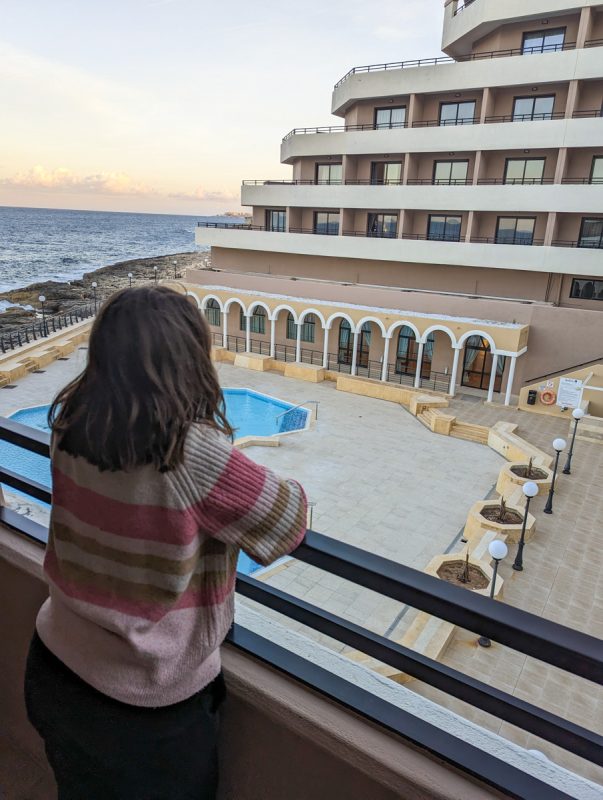
I stayed in the Radisson Blu in St. Julians on my first trip to Malta.
Overlooking the sparkling Mediterranean Sea, this hotel offers a blend of comfort, style, and convenience.
With a beach right and a rejuvenating spa, it’s a prime luxury hotel experience on the island.
Each room boasts a comfy bed, luxury bathroom and balcony – perfect for enjoying a Maltese sunset with a glass of local wine!
Click here for more information about it and to book.
Pebbles Boutique Aparthotel Sliema

Seeking the comforts of home with the perks of a hotel?
Pebbles Boutique Aparthotel in Sliema checks all the boxes.
Located in the heart of Sliema, these modern apartments offer space, comfort, and an enviable location.
I stayed in Pebbles Boutique Aparthotel on my second trip to the island, and loved the roomy spaces, the comfy bed and the sea views from the balcony!
It was a little noisy at night as it was right in the action, but it was nothing my earplugs couldn’t block out.
Inhawi Hostel
Inhawi Hostel in St. Julian’s is ideal for backpackers.
With a swimming pool, chic decor, and a range of room options from dorms to private ensuites, Inhawi Hostel is a haven for savvy travellers.
It’s got a friendly, laid-back vibe, and you’re bound to meet some fellow explorers in its common areas.
Plus, its location in St Julian’s makes it easy to explore the best of what Malta has to offer.
Click here to read more about it.
How to get to Malta
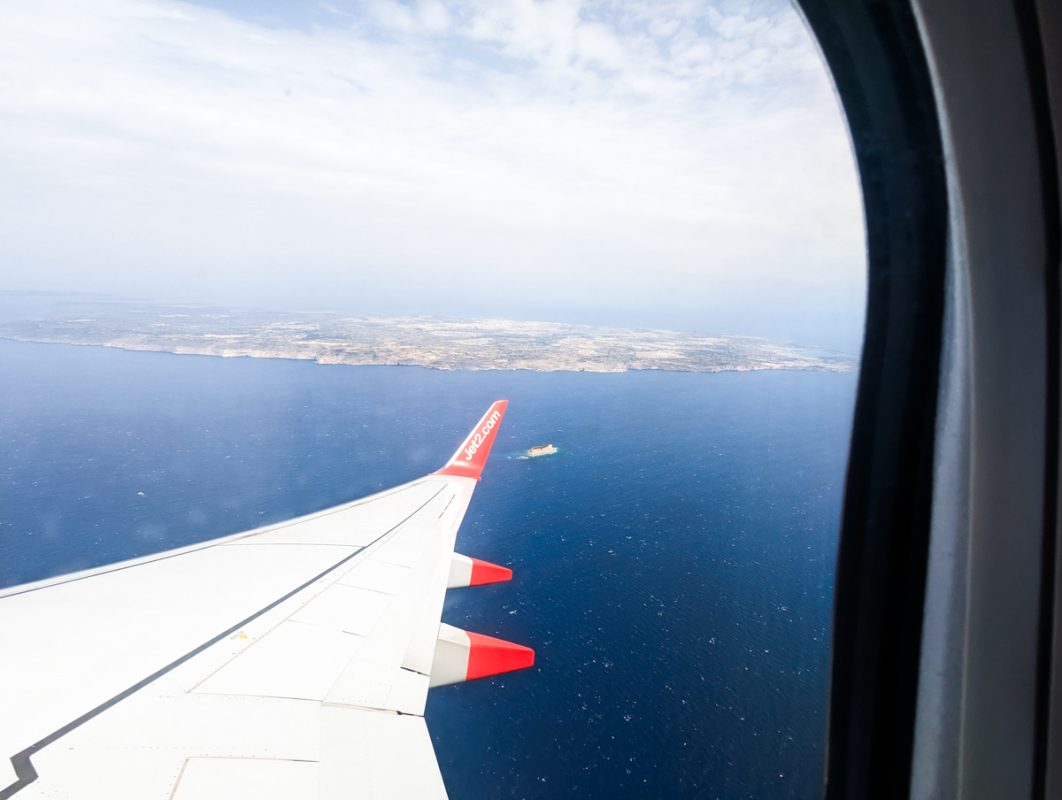
It’s easy (and can be very affordable!) to reach Malta.
Companies like Ryanair, EasyJet, and Wizz Air operate regular flights to Malta from various European cities.
Winter tends to see fewer tourists, which often translates to lower airfares and more elbow room on the plane – win-win!
Fancy an overland adventure? From Sicily, you can hop on a ferry to Malta.
The journey is an experience in itself, with the Mediterranean Sea offering up some delightful views along the way.
Operated by Virtu Ferries, the trip takes about 1.5 to 3 hours, depending on the type of ferry.
How to get around Malta
When it comes to exploring Malta, you’ve got a fair few options that cater to different tastes and budgets.
Renting a car is a popular option – Malta’s compact size means that you can go from one end of the island to the other in just over an hour.
Keep in mind that the Maltese drive on the left – the same as the UK.
Don’t fancy taking the wheel? Malta has a decent bus service, which is Affordable and covers most of the island.
I covered the bus service in detail in the following YouTube video:
Malta’s towns and cities are relatively easy to explore on foot.
Valletta, Mdina, and the Three Cities are perfect for walking, allowing you to meander through their charming, narrow streets at your own pace.
Water taxis also operate between Valletta and Sliema, meaning that you can avoid the traffic!
Lastly, Bolt works well in Malta, whatever the season. When I was staying in Sliema, they often came in 2-3 minutes – sometimes even less! In the winter, you’re much less likely to be waiting a while for your ride.
What to pack for Malta in winter
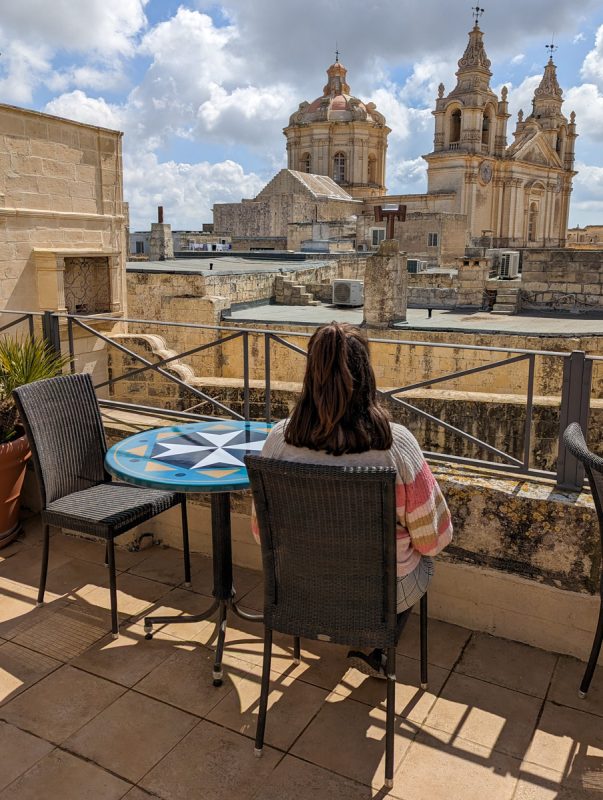
As the weather’s a little more unreliable in Malta in the winter, there are a few extra things that you might want to remember – but you can leave thick coats and wooly hats and gloves at home.
Here’s a handy list of things you should consider packing:
- Light Jacket or Sweater: While it’s never freezing, the temperatures can drop, particularly in the evenings. A light jacket or a cosy sweater will keep the chill at bay.
- Rain Jacket or Umbrella: Malta can be a bit drizzly in winter, so be prepared. A lightweight, waterproof jacket or a compact umbrella is perfect for those surprise showers.
- Comfortable Shoes: Whether you’re exploring ancient cities, strolling along Sliema promenade, or hiking in the countryside, a pair of comfy shoes will be your best friend.
- Layers: Temperatures can fluctuate throughout the day, so packing clothes that you can layer is a smart move. Think T-shirts, long-sleeved tops, cardigans, and so on.
- Swimwear: Yes, even in winter! Whether it’s for a dip in a hotel’s heated pool, a visit to a spa, or a brave dive into the Mediterranean, you might regret leaving your swimwear at home.
- Sunglasses: Even in winter, the Maltese sun can be pretty bright, so don’t forget your sunnies.
- Sunscreen: The sun in Malta can be stronger than you think, even in the cooler months. Pack that SPF!
- Daypack: A small backpack or a cross-body bag is ideal for carrying your essentials when you’re out exploring.
Malta winter FAQs
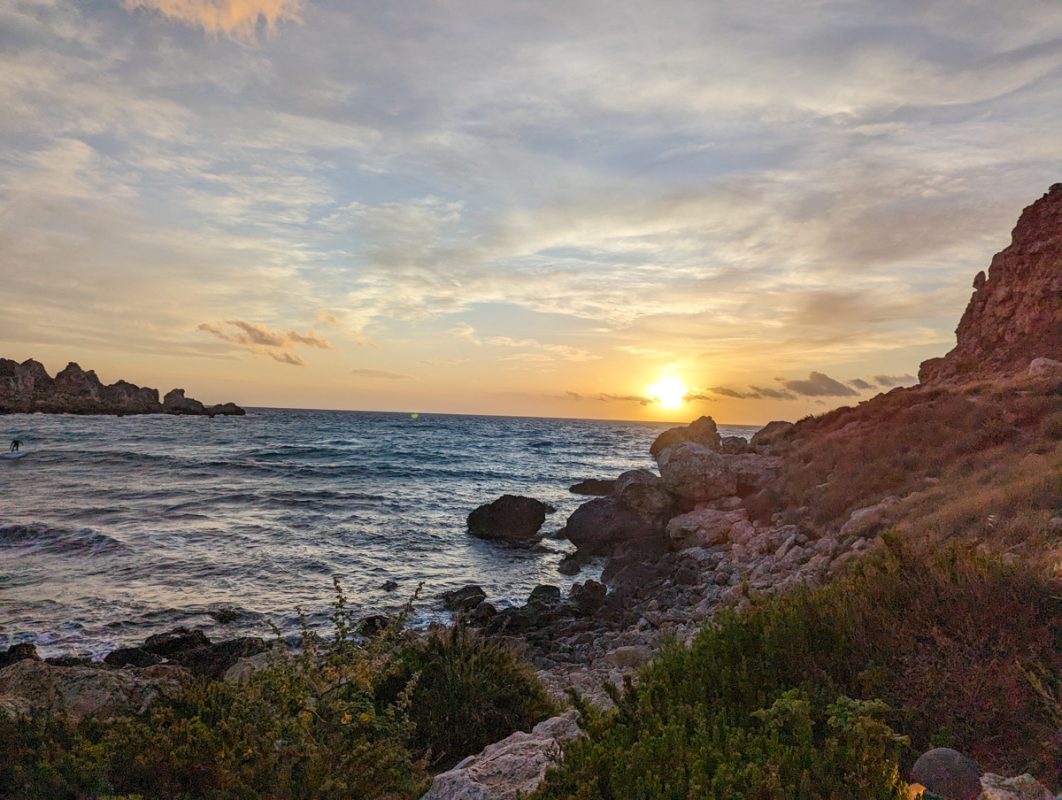
Malta worth visiting in winter?
Malta is a fantastic destination to visit in the winter. With mild temperatures, fewer crowds, and lower prices, it’s the ideal place for a relaxing holiday – and there’s also a huge array of thing to do.
What clothes to wear in Malta in winter?
In Malta during the winter, bring a mix of clothing suitable for both mild and cooler temperatures.
Pack light jackets, warm sweaters, and comfortable shoes for daytime, and something slightly heavier for the evenings when temperatures can drop.
Where should I stay in Malta in winter?
Malta has a range of accommodation options to suit all budgets and preferences.
Valletta is an excellent choice for visitors seeking to be close to the historical sites, while the seaside towns of Sliema and St. Julian’s offer plenty of restaurants and bars.
For a more relaxed atmosphere, consider staying in the quieter towns of Mellieha or Gozo.
What months are winter in Malta?
Winter in Malta is generally considered to run from December to February.
During these months, temperatures are cooler than in the summer but remain relatively mild, with average temperatures ranging from 15-20°C.
What is there to do in Malta in the winter?
In the winter, enjoy exploring Malta’s historical sites, museums, and galleries, as well as taking walks along the coast or in the countryside.
What is the winter like in Malta?
The winter in Malta is mild and pleasant, with average temperatures ranging from 15-20°C.
While there may be some rainfall and occasional chilly days, overall it’s a great time to explore the island without the crowds and higher prices of the peak summer season.
At what time does it get dark in winter in Malta?
In Malta during the winter months, it generally starts to get dark around 5:30-6:00 pm.
This varies slightly throughout the season, with the shortest daylight hours occurring in December.
Does Malta shut down in winter?
While some attractions and restaurants may have reduced opening hours during the winter season, Malta remains a lively destination year-round.
Many of the island’s cultural events, such as the Valletta Baroque Festival, take place in the winter months.
Popular tourist areas like Sliema and St. Julian’s remain active throughout the year.
Are there any special events or festivals in Malta during the winter?
Yes, Malta has a number of special events and festivals during the winter months. Some of the most popular include the Valletta Baroque Festival and the Carnival celebrations in February.
Are you ready to visit Malta in winter?
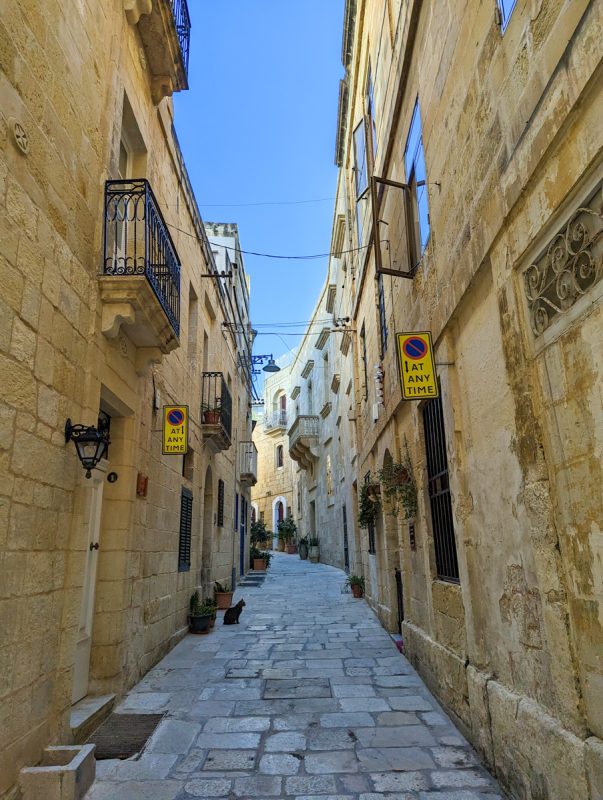
While Malta’s often thought of as a summer destination, I found that in winter, it can tick all the boxes.
Ancient heritage sites, beautiful beaches (even if the Mediterranean waters are a little too chilly in winter!), hearty food and enchanting traditions make a winter visit to Malta incredibly appealing!

